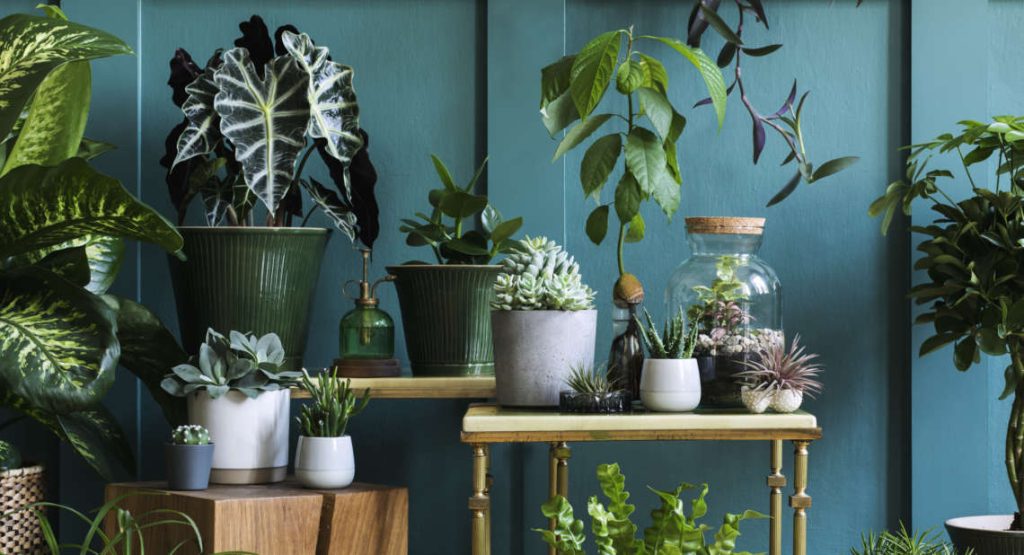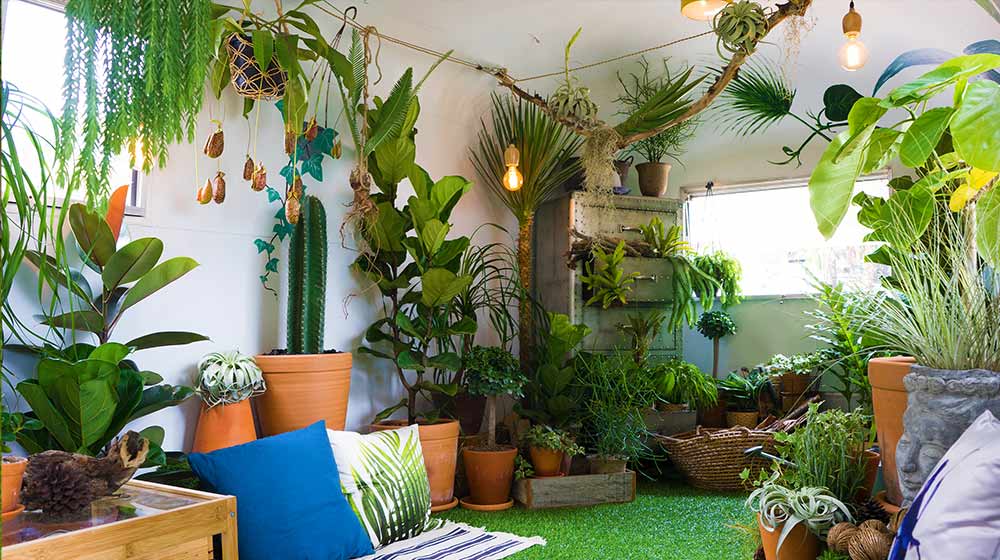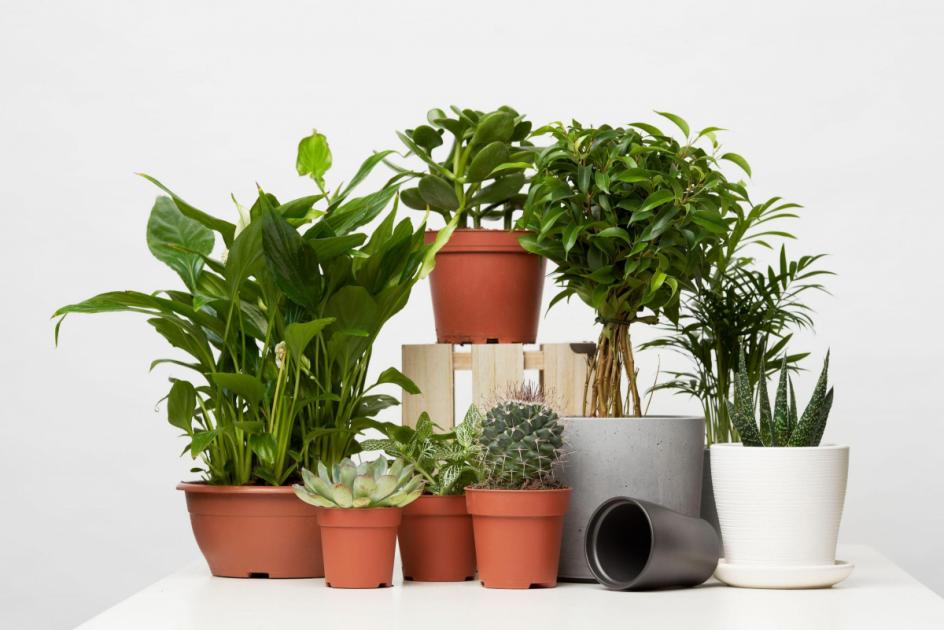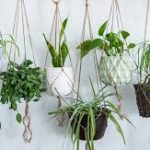- General
- Updated on November 4, 2023
Mastering the Art of Indoor Gardening

Transforming your home into a flourishing oasis is easier than ever with the art of indoor gardening. Whether you have a green thumb or struggle to keep plants alive, indoor gardening is a joyful way to bring nature indoors and create a tranquil and beautiful space.
This article will guide you through the essentials of mastering the art of indoor gardening, providing you with the knowledge and inspiration to create your indoor paradise.

Benefits of Indoor Gardening
Indoor gardening offers a multitude of benefits that go beyond simply beautifying your space. One of the most significant advantages is the ability to purify the air in your home. Plants naturally filter pollutants and release oxygen, creating a healthier environment for you and your loved ones.
Research has shown that indoor plants can reduce harmful chemical levels, such as formaldehyde and benzene— usually found in household products. So, it’s a valuable hobby for urban dwellers.
In addition to improving air quality, indoor gardening positively impacts your mental health. Caring for plants and watching them grow may reduce stress levels and promote a sense of calm and tranquility. Studies have shown that being surrounded by greenery can improve mood, increase productivity, and even lower blood pressure. With indoor gardening, you can create your sanctuary, a space where you can escape the daily stresses of life and reconnect with nature.
Types of Indoor Plants
When it comes to indoor gardening, the options are virtually endless. However, not all plants are suitable for growing indoors. Some plants require more sunlight or humidity than others, making it crucial to pick the right plants for your space.

Here is the list of popular indoor plants (herbs, succulents, houseplants) that are known for their adaptability and resilience:
- Snake Plant (Sansevieria Trifasciata): This plant is perfect for beginners as it can tolerate low light conditions and requires minimal maintenance. The snake plant has striking, sword-shaped leaves that can add a touch of elegance to any room.
- Pothos (Epipremnum Aureum): Pothos is a trailing vine known for its ability to thrive in varied lighting conditions. It is a fast-growing plant with easy propagation, making it a popular choice for indoor gardening enthusiasts.
- Peace Lily (Spathiphyllum): The peace lily is not only a beautiful plant, but it also helps to remove toxins from the air. It prefers medium to low light conditions and requires regular watering.
Essential Tools and Equipment for Indoor Gardening
These tools will help you create an optimal environment for plants and make gardening more enjoyable. Here are some must-have tools for indoor gardening:
- Plant Pots: Choose pots with drainage holes to prevent water from accumulating and causing root rot. Opt for pots made of breathable materials such as terracotta or ceramic, as they allow excess moisture to evaporate.
- Potting Soil: Use a high-quality potting mix specifically formulated for indoor plants. Avoid using garden soil, as it may contain pests, diseases, or weed seeds that can harm your plants.
- Watering Can or Spray Bottle: Depending on your needs, you may need a watering can or a spray bottle. A watering can with a long spout is ideal for watering plants that are placed on high shelves or in hanging baskets.
- Pruning Shears: Keep plants healthy by pruning away dead or yellowing leaves. A pair of sharp pruning shears will make this task easier and prevent damage to the plant.
Choosing the Right Pot and Soil for Indoor Plants
Choosing the right pot and soil is crucial for the success of your indoor plants. The pot you choose should be the appropriate size for your plant, allowing room for root growth. Additionally, it should have drainage holes to prevent water from pooling at the bottom, which can lead to root rot. Pot materials such as terracotta and ceramic are excellent choices as they allow excess moisture to evaporate.
When it comes to soil, using a high-quality potting mix is essential. A potting mix is designed to provide adequate drainage and aeration for indoor plants, unlike garden soil, which might become compacted and retain too much moisture. Look for a combination of organic matter, peat moss, and perlite or vermiculite. It will ensure that plants receive balanced nutrients and moisture.
It’s also important to consider the specific needs of your plants when choosing soil. Some plants, such as cacti and succulents, require well-draining soil with a higher sand or perlite content. On the other hand, tropical plants may benefit from a soil mix that retains slightly more moisture. Research the preferences to ensure the best growing conditions.

Proper Watering and Fertilizing Techniques for Indoor Plants
Watering and fertilizing are two critical aspects of indoor plant care. Proper watering ensures that your plants receive the right amount of moisture without becoming waterlogged or dehydrated. It depends on the type of plant, pot size, and environment.
- Check the Soil Moisture: Check the moisture by sticking your finger about an inch deep into the soil. If it is dry, water it. If moist, wait for a few days.
- Water Thoroughly: Ensure water reaches the root. Water until it drains out of the pot bottom. It helps flush out any accumulated salts or toxins in the soil.
- Avoid Overwatering: It is one of the most common reasons indoor plants fail to thrive. Make sure to allow the soil to dry out slightly to prevent root rot. Succulents and cacti, in particular, prefer drier conditions and should be watered sparingly.
Fertilizing is another organic aspect. While potting mixes typically contain some nutrients, they get depleted over time.
Fertilizers provide plants with the necessary nutrients to promote healthy growth. Choose a balanced, water-soluble fertilizer and follow the instructions on the package for application rates. It’s important not to over-fertilize, as this can lead to fertilizer burn and damage the roots of your plants.
Understanding Light Requirements for Indoor Plants
- High-Light Plants. Plants that require high light need direct sunlight for several hours a day. They should be in a south or west-facing window where they can receive the most sunlight. Examples of high-light plants include succulents, cacti, and some tropical plants.
- Medium Light Plants. Medium-light plants can tolerate indirect or filtered sunlight. They should be near an east or north-facing window, where they can receive bright but indirect light. Examples are pothos, spider plants, and peace lilies.
- Low-Light Plants: Low-light plants can thrive in areas with minimal natural light. They can tolerate artificial light sources or dimly lit rooms. Examples include snake plants, ZZ plants, and Chinese evergreens.

If your home has limited natural light, consider supplementing with artificial light sources such as fluorescent or LED grow lights. It provides the necessary spectrum of light for plant growth.
How do we adapt indoor plant care routines based on seasonal changes?
Maintaining indoor plants can be a challenge. Let us see what can help.
Pruning and Maintenance Tips
Pruning involves cutting back overgrown or dead branches and leaves to promote healthy growth and maintain the desired shape of the plant. Regular maintenance tasks such as dusting the leaves, checking for pests, and repotting play a vital role in the overall health of your indoor plants.
During summers, plants grow more vigorously, so pruning becomes even more critical. Trimming back excessive growth will prevent your plants from becoming overcrowded and ensure better airflow around the foliage. It also helps to remove any unhealthy or yellowing leaves, allowing the plant to focus its energy on producing new growth.
During winters, plants enter a dormant state or display slower growth. It is the perfect time to perform maintenance tasks such as cleaning the leaves to remove dust, debris, or any potential pests. Also, repotting provides sufficient space for root growth.
Humidity and Temperature Control
Pay attention to the humidity and temperature levels in your indoor garden. Different plants have varying requirements, and these needs may change as the seasons transition. By understanding and adapting to these changes, you can provide the best possible care for your plants.
During the winter, indoor environments tend to be drier due to heating systems, which can result in low humidity levels. To counteract this, consider using a humidifier or placing water-filled trays near your plants to increase moisture in the air. Another option is grouping plants so they naturally release moisture through transpiration, creating a more humid microclimate.
In a hot climate, indoors can become too warm for some plants. To keep your green companions happy, keep them away from direct sunlight, and consider using blinds or curtains to filter out excessive heat. You can use fans or ventilation systems to improve air circulation and help regulate the temperature.
Re-potting and Transplanting
Another crucial aspect is knowing when and how to re-pot or transplant your plants. As your plants grow, they will eventually outgrow their current containers, which can restrict their root development and overall health.
Regularly inspect your plants for signs of being root-bound, such as roots poking out of drainage holes or appearing tightly packed in the pot. If you notice these signs, it’s time to consider re-potting.
Gently remove the plant, loosen the roots, and remove old soil, then place it in its new container with fresh potting mix.
Transplanting involves moving your plants to a different location within your indoor garden.
Troubleshooting Common Indoor Plant Problems
Even with the best care, indoor plants can encounter problems. They are:
- Yellowing Leaves: Yellowing leaves are a sign of overwatering, nutrient deficiencies, or inadequate light. Adjust your watering schedule, fertilize as needed, and ensure plants receive adequate light.
- Pests: Indoor plants can attract pests such as aphids, spider mites, or mealybugs. Treat them promptly with organic or chemical pest control methods to prevent them from spreading.
- Leaf Browning or Burn: Leaf browning or burn can occur due to excessive heat, direct sunlight, or low humidity. Move your plants away from heat sources or direct sunlight, and increase humidity levels by misting or using a humidifier.
- Drooping or Wilting: Drooping or wilting is a sign of underwatering, overwatering, or root rot. Adjust your watering schedule and check the soil moisture level to determine the cause.
Conclusion:
Enjoying the Rewards of Indoor Gardening
Indoor gardening offers endless possibilities for creating a lush and vibrant space within your home. Whether you’re a seasoned gardener or a beginner, mastering the art of indoor gardening is within your reach.
Remember to consider the specific needs of your plants, such as lighting and watering requirements, and avoid common mistakes such as overwatering or neglecting pest control.
With patience and dedication, you can enjoy the rewards of indoor gardening and create a beautiful haven that brings nature indoors. So, start your indoor gardening journey today.
Join the discussion
Related Articles
No results available
ResetTrending Articles


- General
- Updated on November 14, 2025


- Tech
- Updated on November 12, 2025


- General
- Updated on November 8, 2025


- General
- Updated on November 6, 2025


- Sports
- Updated on November 5, 2025


- General
- Updated on November 4, 2025


- General
- Updated on November 1, 2025

- General
- Updated on October 30, 2025


- General
- Updated on October 30, 2025


- General
- Updated on October 27, 2025
No results available
Reset


